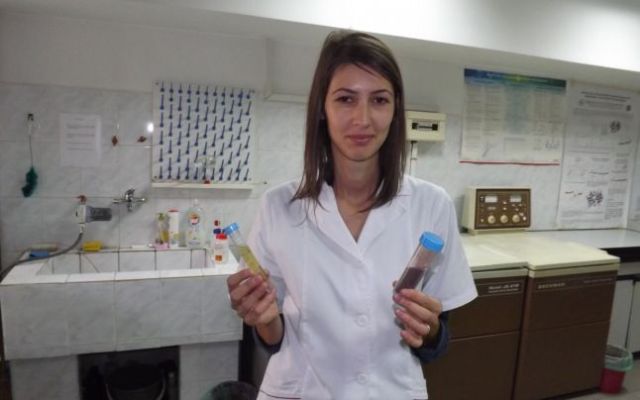On Monday, October 28. a team of researchers in Romania announced that they had created a new type of artificial blood that could one day be used in humans without negative side effects. By Thursday, hordes of sexy vampires worldwide had came “out of the coffin,” revealing their existence on the basis that they no longer need to feed on humans to survive.
…Okay, just kidding about the vampires. Probably. But the blood thing is true!

Created by researchers at the Babeş-Bolyai University in Cluj-Napoca, the artificial blood (not Tru Blood, but you can think about it that way if you want to) is made of water, salt, albumin and a special protein – hemerythrin – extracted from marine worms. This stress resistant protein is unique to the research and has been key in creating a stable product that can be used in transfusions. According to lead researcher Dr. Radu Silaghi-Dumitrescu, previous attempts at artificial blood have ended in failure because the blood has been unable to withstand mechanical and chemical stress, often creating toxic byproducts under real life conditions.
So far, the hemerythrin-based artificial blood has had very encouraging results in tests with laboratory mice. “Mice treated with this ‘Made in Cluj’ artificial blood did not experience any side effects, and this is precisely what we want, not to display signs of inflammation or disease,” said Silaghi-Dumitrescu. Although human testing is “a very delicate topic,” the team is committed to further exploration of the possibilities, with the ultimate goal of creating artificial blood that will be accepted by the human body in a state of shock (such as surgery). In time, they hope to create “instant blood,” a mixture of salts and protein that can easily be transported and which will turn into artificial blood when water is added.

The biggest hurdle for the team right now, Silaghi-Dumitrescu explained to Adevarul, is “administrative predictability.” Since the project’s start in 2007, he has found that even when funding is approved “on paper,” bureaucratic impediments can get in the way of actually purchasing equipment necessary to continue experiments. However, the team remains optimistic about the prospects. Silaghi-Dumitrescu estimates that it will take one to two more years of research with animals before they can move on to human trials, which would take another two to three years minimum. From there it would be passed to a manufacturer and undergo further testing before potentially going to market.
If everything goes as planned, Silaghi-Dumitrescu and his team would almost certainly be in the running for a Nobel. Today’s human blood donation system is plagued with supply chain issues, not to mention the persistent and sensitive questions regarding who is and is not allowed to donate. Gay people are often excluded, for reasons rooted in legitimate concern about the spread of HIV, but complicated by ignorance, homophobia and inefficient screening techniques. An artificial blood supply could remove many of these issues from the equation and ensure a steady supply of life-saving blood for humans and vampires alike.
(Again, just kidding about the vampires! …Probably.)







